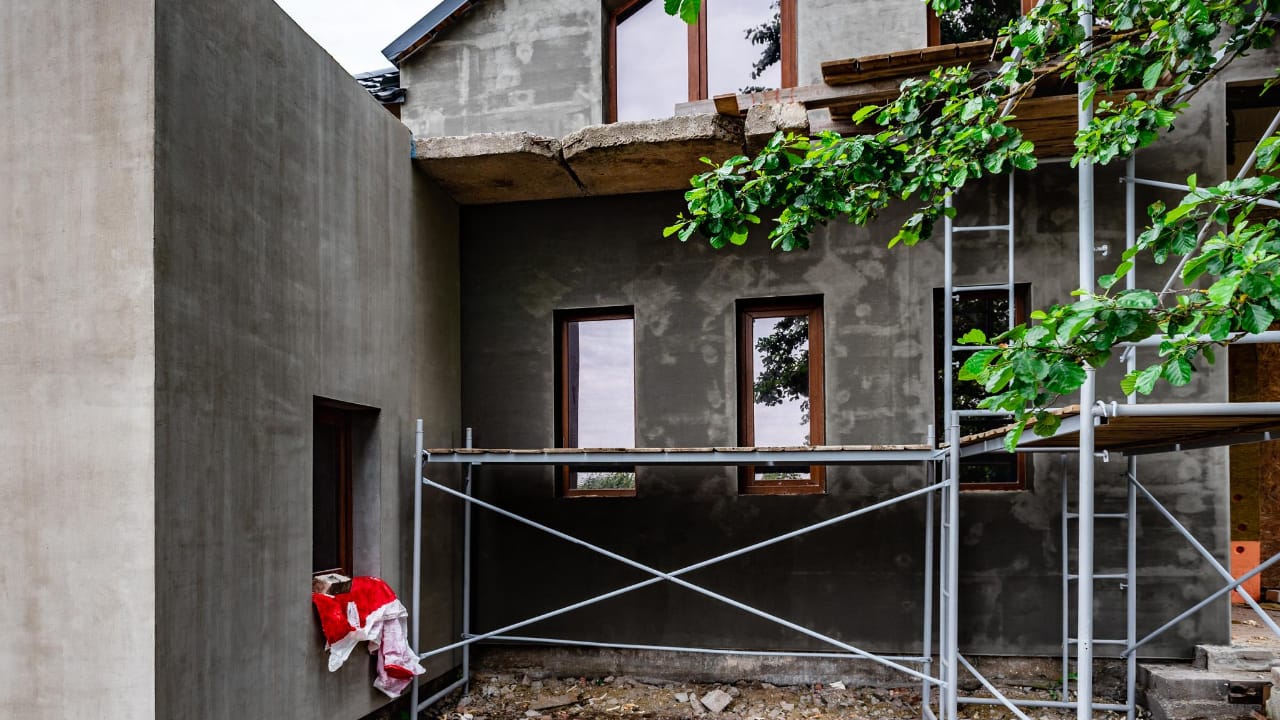Plasterer
Plasterer
Plasterers need to possess a high level of attention to detail, dependability, and self-control in order to earn a living. You may need a GED certificate or high school diploma. Apprenticeships may also be an option. Apprenticeships will provide on-the-job training. Most employers will prefer applicants with a little more experience in their field.
Plasters can be applied layer by layer to create a uniform surface. Similar to concrete-laying, the plastering process can be done in layers. For removing excess render, the plasterer may use a "straightedge" (or screed). The plasterer will then score the surface with either a float, or a smooth and wooden tool.

Plastering
Plasters can be applied layer by layer to create a uniform surface. Similar to concrete-laying, the plastering process can be done in layers. For removing excess render, the plasterer may use a "straightedge" (or screed). The plasterer will then score the surface with either a float, or a smooth and wooden tool.
Plasterers have to work in very dirty and dusty environments. Protective gear is required for plasterers to keep their skin and eyes safe from the dust. Plasterers can still sustain injuries despite wearing safety gear. Muscle strain is the most common type of injury from lifting heavy plasters. Some plasterers may also be injured by falling from ladders.
Plasterer
Suspended Ceilings
Gyprocker
Cornice Installation
Drywall
A putty knives can also be used to place a thin plaster layer over the repaired area. You can then apply primer to cover the patched area. You can also use fiberglass tape or mesh to cover small holes or cracks. A traditional plaster ceiling with lath can be chosen, as it is more common in older homes. Traditionally, lath and plaster ceilings are made by nailing laths to the ceiling joists. Layers of plaster can then be added.
A putty knives can also be used to place a thin plaster layer over the repaired area. You can then apply primer to cover the patched area. You can also use fiberglass tape or mesh to cover small holes or cracks. A traditional plaster ceiling with lath can be chosen, as it is more common in older homes. Traditionally, lath and plaster ceilings are made by nailing laths to the ceiling joists. Layers of plaster can then be added.
Ceiling Repair
A plasterer is for you if you like working with your hands. An apprenticeship usually lasts three years and will require a high school diploma. The apprenticeship will teach you the basics of plastering including reading blueprints and pricing projects. Also, plasterers need to be fit and capable of working well together.
A sharp knife is necessary to patch a ceiling. Utility knives are great tools for this. You can also use a utility knife to remove drywall dust. You should apply a thin coating of joint compound in order to close the crack. A second, thin layer should be applied to hide the bump. Finish the job by smoothing out the patched areas with drywall sandpaper.
Wall Repair
Plasterers have to work in very dirty and dusty environments. Protective gear is required for plasterers to keep their skin and eyes safe from the dust. Plasterers can still sustain injuries despite wearing safety gear. Muscle strain is the most common type of injury from lifting heavy plasters. Some plasterers may also be injured by falling from ladders.
It is important to first remove mold from ceilings before trying to repair them. Shellac or stain blocking primer can be used. When you're done with patching you can start painting over the stain. While it may seem hard to believe, ceiling textures are available in many styles.
Suspended Ceilings
To apply thin layers of plaster on the damaged area, you can use a putty blade. Next, apply a primer of the same color to the walls. You can also use fiberglass tape or mesh to cover small holes or cracks. Alternativly, you could opt for a plaster and lath roof, which can often be found in older properties. Plaster and lath ceilings have been made in the past by attaching laths at ceiling joists. Layers of plaster can then be added.
Small cracks in the ceiling are usually a sign that a leak has occurred. Old plaster becomes rigid with age and can develop tiny stress cracks. The cracks can be small or very hairline. However, larger ones could develop. If the cracks aren't structurally significant, you may just need to clean them up using a 5-in-1 tool. Filling larger cracks with joint compound, spackling paste, or joint glue may be necessary.
Gyprocker
If you want to repair a ceiling, a sharp-knived knife will be necessary. For this, the utility knife is a great tool. Also, you can use your utility knife for slicing out dust from drywall. A thin layer of joint compound should fill the crack and slightly overfill it. You can conceal any small bumps by applying a thin layer of compound. Finally, use a fine drywall sandpaper to smooth the patched area.
Plasterers work in dirty, dusty conditions. Protective gear is required for plasterers to keep their skin and eyes safe from the dust. Plasterers still have the potential for injury, even though they wear safety gear. Muscle strain is the most common type of injury from lifting heavy plasters. Plasterers can also slip from ladders.
PlastererHow do you resurface a ceiling?
Check our site for more info
How do you fix a small water damaged ceiling?
Is it possible to repair a portion of your ceiling? You can repair a small portion of the ceiling with a plasterboard patch or drywall. You can remove the plaster from affected areas and then patch it with drywall. Attach it to your ceiling using drywall screws.
How hard is it to replace a ceiling?
Replacing a ceiling drywall will take time and some effort, but it isn't difficult if you have the right tools and materials.